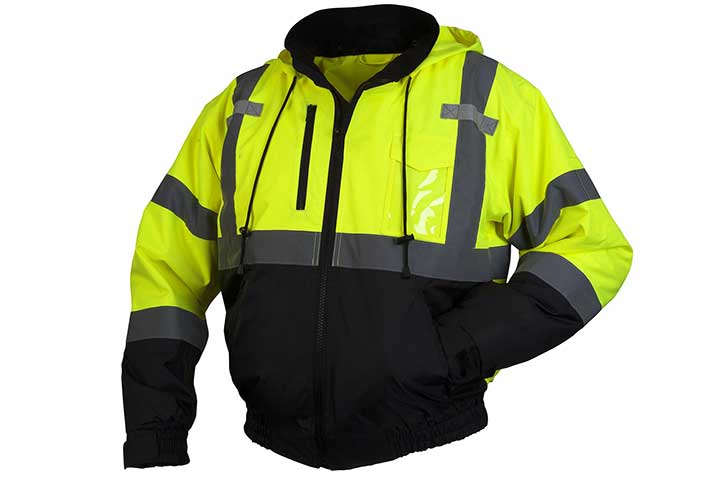Product Hub April 15, 2021
Product IQ: The Ins and Outs of Safety Apparel
Decoding the necessary-but-confusing lingo of certifications.
Workwear is more than just promotional apparel – it’s an essential tool for end-users in a plethora of industries, such as roadwork, construction, utilities, public works and law enforcement. Because safety is paramount in these industries, there’s a litany of certifications that guide the apparel workers wear on the job. Eric Pseja, business operations manager at Rugged Outfitters (asi/84143) in Mahwah, NJ, highlights the different technical aspects and high-visibility standards of the supplier’s Pyramex Class 3 hi-vis bomber jacket (RJ3110). Familiarity with these details can make – or break – sales opportunities in the lucrative manufacturing and construction markets.

The Pyramex hi-vis bomber jacket (RJ3110) from Rugged Outfitters is rated ANSI/ISEA 107-2015 Type R Class 3.
ANSI/ISEA 107-2015
The American National Standards Institute (ANSI) has established performance and materials standards for high-visibility garments to be used as safety apparel in risky jobs, like roadwork, utilities and law enforcement. They’ve also set minimum amounts of reflective and performance materials, along with colors and placement of those materials, that enhance visibility of the wearer. To be certified, the materials must be tested by an accredited lab.
Type R - Roadway and Temporary Traffic Control
The International Safety Equipment Association (ISEA) standard (updated in 2015) determines the settings in which a specific garment can be used based on the amount of visibility materials on the garment. The ISEA has three different types of garment ratings: Off-Road (O), Roadway and Temporary Traffic Control (R) and Public Safety Activities (P).
Class 3
In addition, the ISEA categorizes garments into a class, which also dictates where the garment can be used. The amount of reflective tape and high-visibility background material that’s required will vary.
- Class 1: For work areas away from traffic or where speeds don’t exceed 25 mph.
- Class 2: For work areas where speeds don’t exceed 50 mph.
- Class 3: For work areas where speeds will exceed 50 mph.
Waterproof
The shell of this jacket is rated Waterproof AATCC 127 by the American Association of Textile Chemists and Colorists (AATCC). “They use a test method to measure a fabric’s resistance to penetration of water under hydrostatic pressure,” says Pseja.
220gsm Fleece
Grams per square metre (gsm) is a common measure of fleece thickness. Anything from 200-300 is considered midweight and ideal for layering systems, such as the removable inner fleece liner in this jacket that makes it an all-year garment.
Additional Features
- Stowaway hood
- Clear front pocket for identification
- Left arm pen/pencil pocket
- Cellphone/radio chest pocket
- Shoulder tabs for microphone mounting

Product Hub
Find the latest in quality products, must-know trends and fresh ideas for upcoming end-buyer campaigns.
